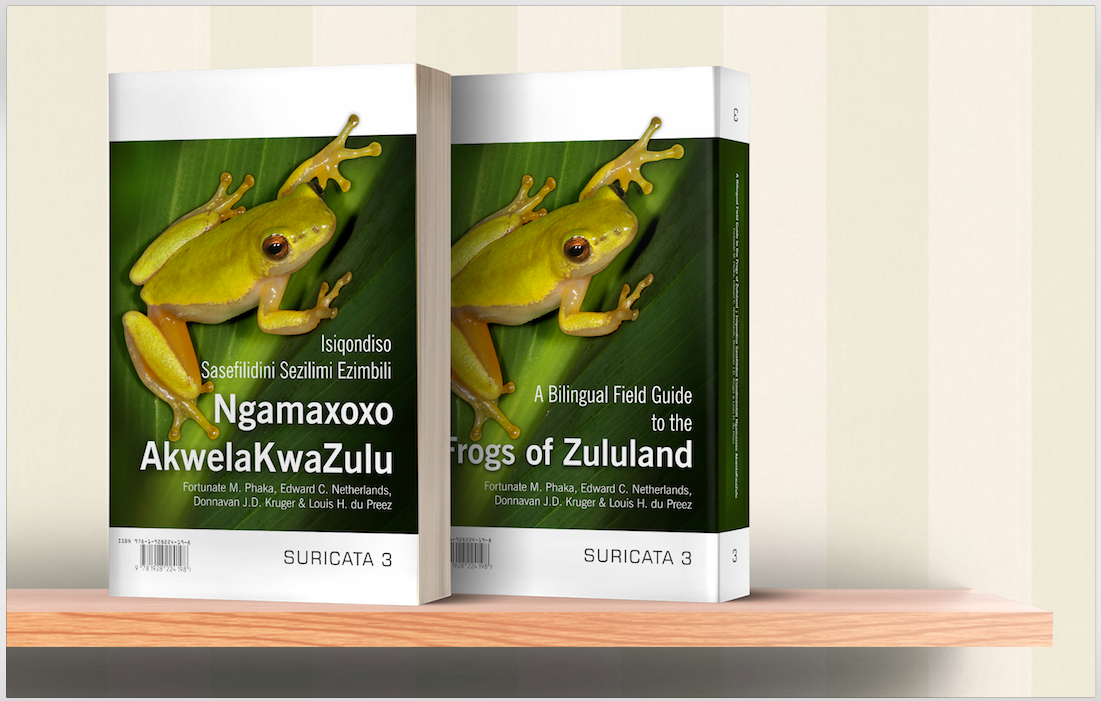South Africa’s First Frog Handbook Written in an Indigenous Language
‘A Bilingual Guide to the Frogs of Zululand’ is the first in a planned series of publications that author Fortunate Mafeta Phaka (who is also our project director) calls ‘people friendly’ wildlife publications.
This book is the first South African frog field guide to be written in an indigenous language. The writing process took two years while juggling being a project director and working on his Masters degree. The book is a means to derive socio-economic benefits from his scientific research and amphibian biodiversity in the Zululand region. Lessons learned from consultation sessions with Zululand community members formed a point of departure for the book. The community’s curiosity, perceptions, and cultural views relating to frogs informed how this book was to be written.
The introductory section of the book presents what the community members expressed interest in learning about frogs and applies scientific contexts to how they perceive and relate to frogs. In the same section misconceptions about frogs are dispelled and interesting but little-known information about frogs is disseminated. This is done in a style of writing that is geared for a popular audience and has minimal scientific jargon. The book is written in IsiZulu and English as these are the most widely used languages in Zululand. Information in this book is presented in a manner that is conversational, uncondescending, and also respects aspects of the Zululand community’s culture.
The species description pages of this book illustrate types of frogs found in Zululand. These species description pages follow the process from first seeing a frog to finally reaching a positive identification. Generally, when you encounter a frog you first notice its size, colour and the structure of the body. Upon close inspection, you start to notice the finer details of its morphology, including the shape of the head, features of the forearms and hind legs, visibility of the tympanum, and feel of the skin on the back and the underside. As you improve in your ability to describe morphological features of frogs you also become better at determining sexual dimorphism. You also learn how to differentiate species using key identification points.
Fortunate made further history with this book by becoming the first student at his university to submit a Masters thesis along with a published book. Another quirk of the book is its ordering of the authors that represents a hierarchy of academic qualifications.
1st Author: MSc Student (Fortunate Mafeta Phaka)
2nd Author: PhD Candidate (Edward C. Netherlands)
3rd Author: Postdoc (Donnavan J.D. Kruger)
4th Author: Professor (Louis H. du Preez)
The book is available at SANBI bookshops: https://www.sanbi.org/shops-venues-services/bookshop-0
